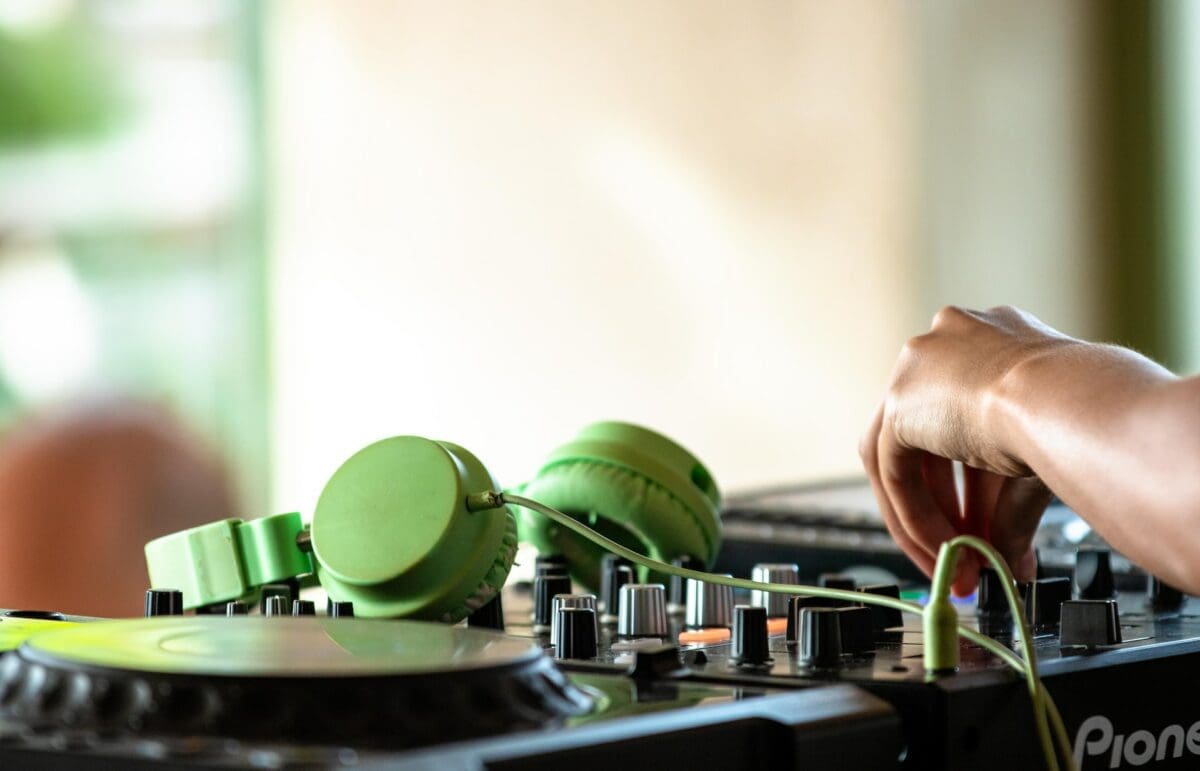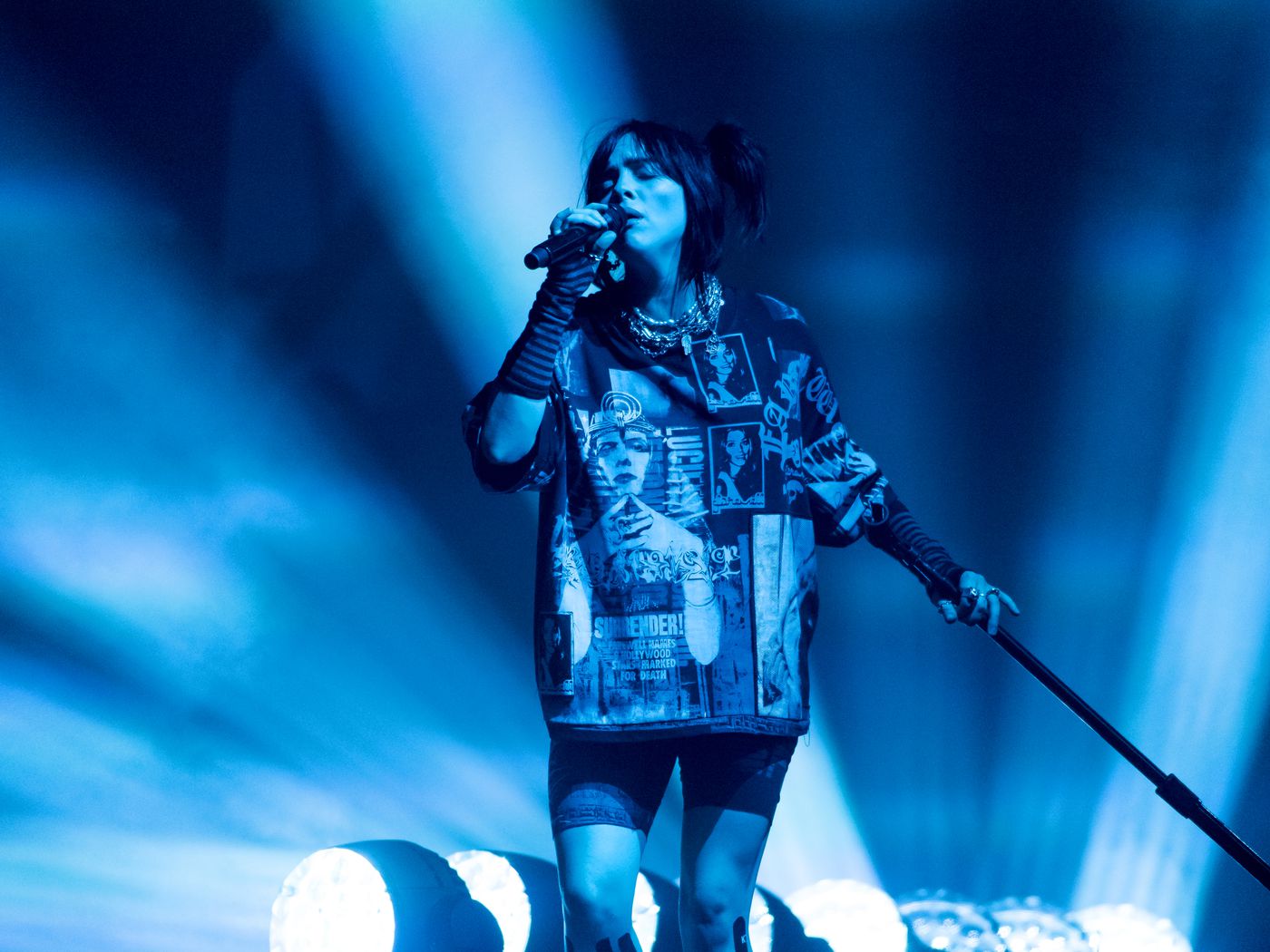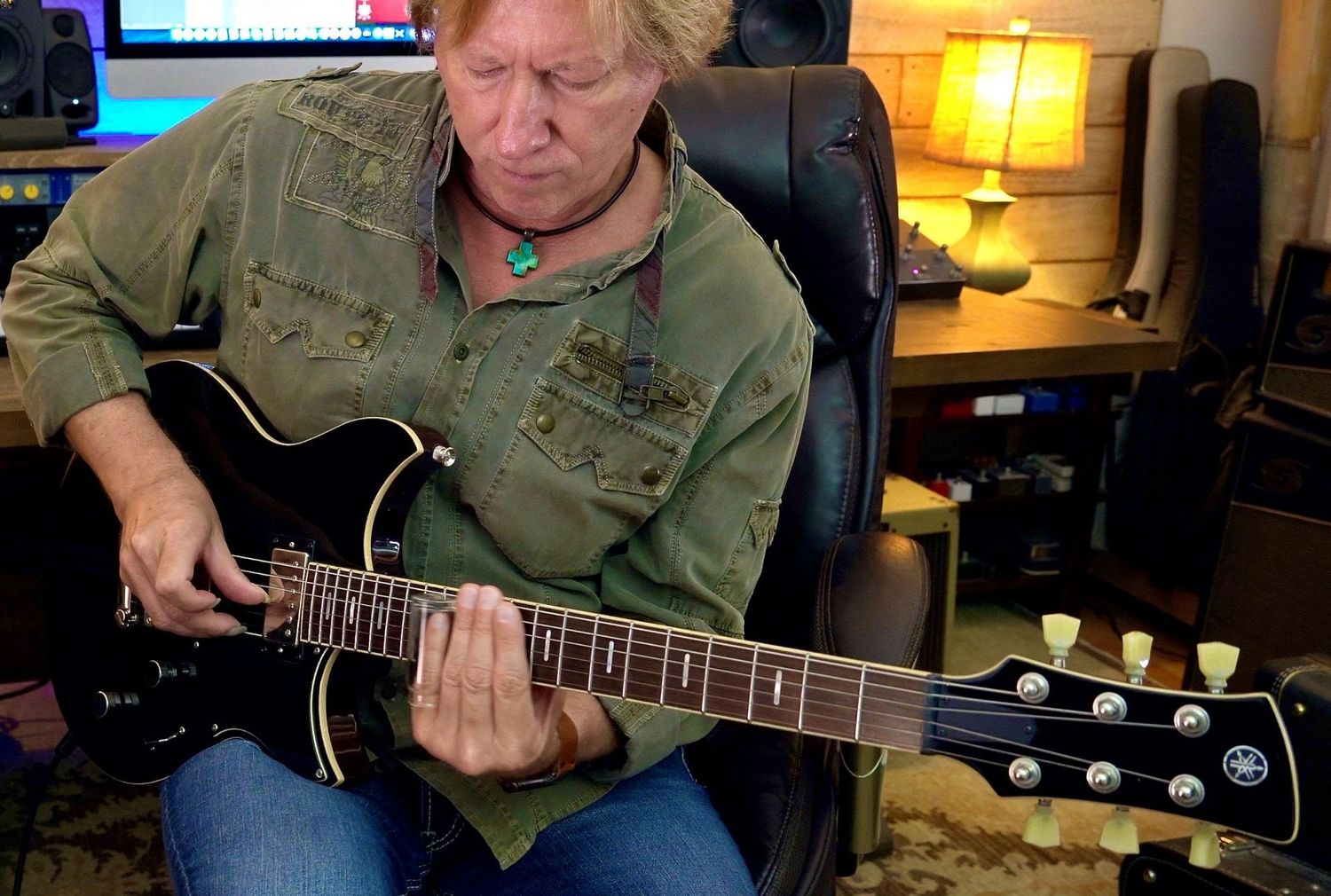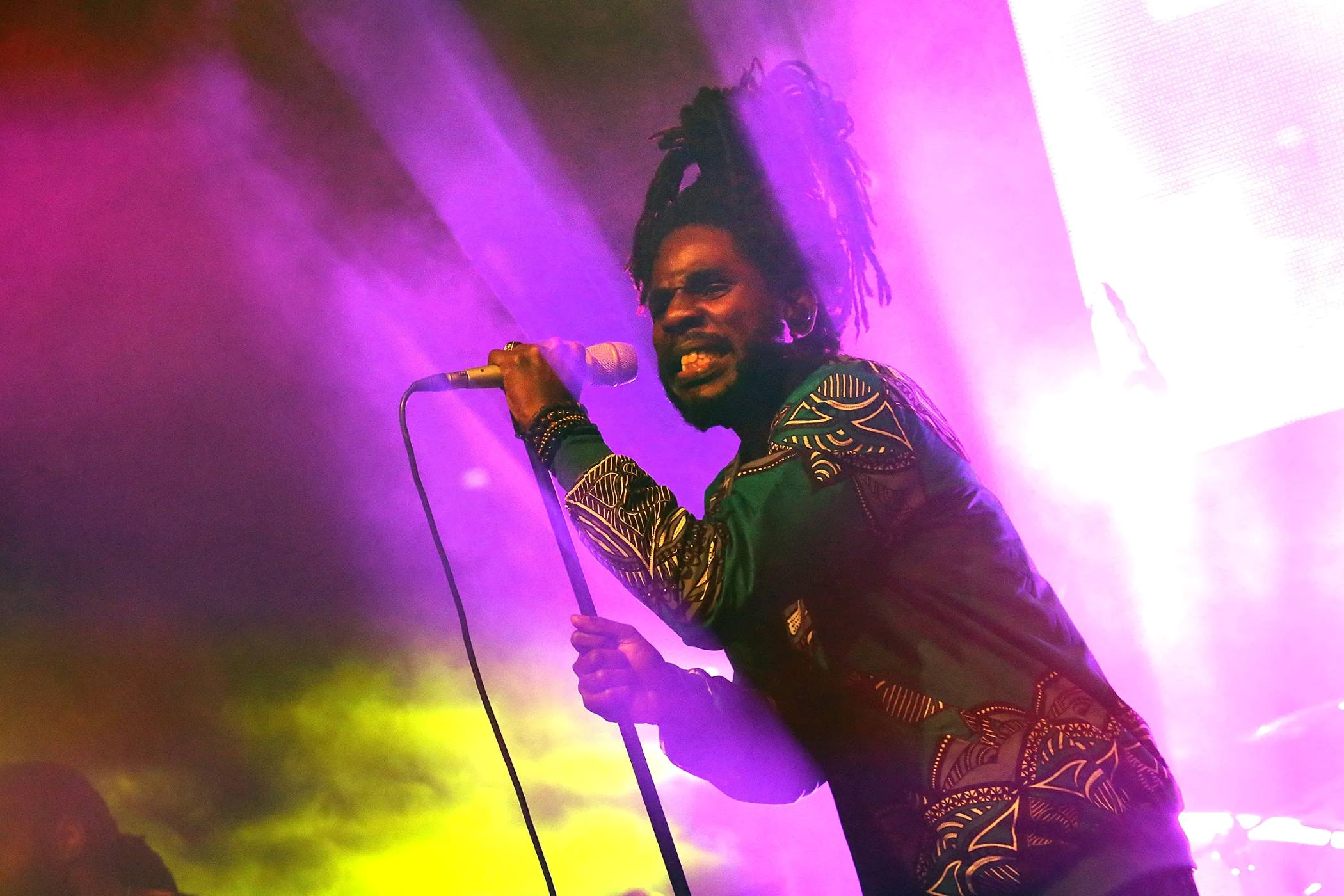Home>Production & Technology>Tempo>What Range Is Considered Mid-Tempo In Electronic Music


Tempo
What Range Is Considered Mid-Tempo In Electronic Music
Modified: March 4, 2024
Discover what range is considered mid-tempo in electronic music and learn how tempo affects the energy and feel of the music. Explore the importance of tempo in creating the perfect electronic music experience.
(Many of the links in this article redirect to a specific reviewed product. Your purchase of these products through affiliate links helps to generate commission for AudioLover.com, at no extra cost. Learn more)
Table of Contents
Introduction
Welcome to the world of electronic music, where the beats and rhythms transport us to a realm of sonic exploration and dancefloor euphoria. One fundamental aspect that defines electronic music is the tempo – the speed at which the music moves and the heartbeat of the track. Understanding tempo is crucial for DJs, producers, and music enthusiasts alike, as it sets the energy and mood of a composition.
In electronic music, tempo is measured in beats per minute (BPM), representing the number of beats that occur in one minute. From the high-energy tracks that make you want to jump to the slower, more hypnotic tunes that make you sway, the range of tempos in electronic music is diverse and vast.
In this article, we will delve into the concept of mid-tempo in electronic music, exploring its definition, its role in different genres, and the factors that affect its perception. Whether you’re a seasoned DJ or a curious music lover, let’s embark on this sonic journey to discover what range is considered mid-tempo in electronic music!
Definition of Tempo in Electronic Music
Tempo is a fundamental aspect of music that determines the speed at which a piece of music progresses. In electronic music, tempo plays a crucial role in setting the energy level and overall vibe of a track. It is denoted in beats per minute (BPM) and represents the number of beats that occur within one minute.
The tempo of a track can vary significantly, ranging from the slow and atmospheric to the fast and energetic. Electronic music encompasses a wide range of genres, each with its own characteristic tempo. For instance, genres like ambient and downtempo tend to have slower tempos, while genres like techno and drum and bass typically have faster tempos.
Understanding and properly utilizing tempo in electronic music is essential for DJs and producers to create cohesive mixes, live performances, and studio productions. DJs often use tempo as a tool to create seamless transitions and build energy on the dancefloor, while producers utilize tempo to convey a specific mood or emotion in their tracks.
Tempo is also closely linked to the concept of groove in electronic music. A well-crafted groove is achieved by aligning the rhythm elements, such as drums and basslines, with the tempo of the track. This synchronization is what gives electronic music its infectious and captivating rhythm that makes people want to move and dance.
Overall, tempo in electronic music serves as the backbone that brings the various elements of a composition together. It sets the pace, dictates the energy, and creates a cohesive flow that allows the listener to connect and engage with the music on a visceral level. Understanding the concept of tempo is crucial for anyone seeking to explore, create, or appreciate the rich and diverse world of electronic music.
Different Tempo Ranges in Electronic Music
Electronic music encompasses a wide range of tempos, each bringing its own unique energy and style to the tracks. From the slow and immersive sounds of ambient to the fast-paced and intense beats of hardcore, the tempo range in electronic music offers something for every listener’s taste and mood. Let’s explore some of the different tempo ranges in electronic music:
- Slow Tempos: At the lower end of the tempo spectrum, we have genres like ambient, downtempo, and chillout. These genres typically have tempos ranging from 60-100 BPM, creating a relaxed and atmospheric sound. The slow tempos allow for spacious melodies, ethereal textures, and a sense of tranquility.
- Moderate Tempos: Moving up the tempo ladder, we find genres like deep house, tech house, and progressive house, which usually range from 110-130 BPM. These genres strike a balance between groove and energy, making them perfect for both club settings and laid-back listening.
- Mid-to-High Tempos: In the middle range, we have genres like techno, trance, and electro with tempos ranging from 130-150 BPM. These genres are known for their driving beats, pulsating basslines, and intense energy. They create an energetic and immersive sonic experience that can keep the dancefloor moving for hours.
- High Tempos: For those seeking a fast-paced and exhilarating experience, genres like drum and bass, hardcore, and gabber offer tempos above 150 BPM. These genres are characterized by rapid-fire beats, intricate rhythms, and intense basslines that push the boundaries of sonic intensity.
It’s important to note that these tempo ranges are not fixed and can vary within each genre. Electronic music is constantly evolving, and artists often experiment with tempos to create unique and innovative sounds. These different tempo ranges allow for a diverse range of emotions and atmospheres, ensuring that there is something for every listener’s preference and mood in the vast world of electronic music.
Understanding Mid-Tempo in Electronic Music
Mid-tempo in electronic music refers to a specific range of BPM that falls between the slower tempos and the faster-paced genres. While the perception of mid-tempo may vary slightly among different subgenres, it generally ranges from around 100 to 130 BPM. Mid-tempo tracks and genres are known for their rhythmic complexity, groove, and versatile energy.
Mid-tempo offers a balance between the slower, more contemplative atmospheres of downtempo and the high-energy intensity of faster genres. It allows artists and producers to explore a wide range of musical ideas, incorporating elements from various genres into a cohesive and engaging composition.
One of the key characteristics of mid-tempo is its ability to create a hypnotic and groovy atmosphere. The carefully crafted rhythms, syncopated beats, and intricately layered percussion create a captivating and infectious groove that is both mesmerizing and dancefloor-friendly.
Mid-tempo tracks often feature deep basslines, melodic synth lines, and atmospheric textures, giving them a rich and immersive sonic landscape. This range allows for both introspection and movement, making it suitable for both relaxing listening sessions and energetic club environments.
Artists and producers who specialize in mid-tempo genres have developed signature styles, blending elements of house, techno, funk, and other genres to create their unique sound. This versatility allows for cross-genre collaborations and experimentation, resulting in fresh and innovative tracks that defy categorization.
Mid-tempo tracks and genres have gained significant popularity in recent years, attracting a dedicated fan base and a vibrant community. Artists like Zhu, Rüfüs Du Sol, and Odesza have mastered the art of blending mid-tempo elements with electronic and organic sounds, creating a distinct and immersive musical experience.
Whether you’re nodding your head to a chilled-out mid-tempo groove or immersed in a mesmerizing dancefloor experience, mid-tempo in electronic music offers a sonic journey that bridges different musical worlds and captivates listeners with its unique blend of rhythm, energy, and groove.
Factors Affecting Perception of Mid-Tempo
The perception of mid-tempo in electronic music is influenced by various factors that shape the overall experience and mood of the tracks. These factors can vary from the specific sound design choices to the context in which the music is played. Understanding these factors can help us appreciate and interpret mid-tempo tracks on a deeper level. Let’s explore some of the key factors that affect the perception of mid-tempo in electronic music:
- Rhythmic Complexity: Mid-tempo tracks often feature intricate and syncopated rhythms that contribute to their unique character. The interplay between various percussion elements, such as drum patterns and hi-hats, adds depth and texture to the composition, providing a compelling groove for listeners to connect with.
- Emotional Content: The emotional content embedded within mid-tempo tracks plays a significant role in how they are perceived. Melodic elements, chord progressions, and atmospheric textures can evoke different emotions, whether it be a sense of nostalgia, euphoria, or introspection. These emotional elements enhance the overall impact of the music, resonating with listeners on a deeper level.
- Genre Blending: Mid-tempo genres often incorporate influences from various musical styles, such as funk, soul, and house. This fusion of genres brings together different sonic elements and musical techniques, creating a unique and compelling sound. The blending of genres adds depth and complexity to mid-tempo tracks, making them engaging and exciting for listeners.
- Context and Environment: The perception of mid-tempo music can also be influenced by the context and environment in which it is played. Whether it’s a dimly lit club or an outdoor festival, the atmosphere and energy of the surroundings can enhance the overall experience of mid-tempo tracks. The social and cultural context in which the music is heard can also shape the perception and interpretation of the music.
- Artist and Producer Vision: The artistic vision and intention of the artist or producer can greatly impact how mid-tempo tracks are perceived. Each artist brings their unique style, creative voice, and sonic palette to their compositions, resulting in distinct interpretations of mid-tempo music. The attention to detail, sound design choices, and production techniques all contribute to the final sonic experience.
By considering these factors, we can gain a deeper appreciation and understanding of mid-tempo tracks in electronic music. The rhythmic complexity, emotional content, genre blending, context, and the artist’s vision all contribute to the rich and immersive experience of mid-tempo music, captivating listeners and setting it apart as a distinctive genre within the electronic music landscape.
Popular Genres and Artists Associated with Mid-Tempo
Mid-tempo in electronic music has given rise to several popular genres and artists that have captivated fans with their unique sound and artistry. These genres and artists have pushed the boundaries of electronic music, blending different influences and creating a distinct sonic identity. Let’s explore some of the popular genres and artists associated with mid-tempo:
- Deep House: Deep house is a genre that combines the rhythmic elements of house music with deep, atmospheric textures. Artists like Lane 8, Nora En Pure, and Yotto have gained widespread acclaim for their melodic and emotive deep house tracks, often characterized by mid-tempo grooves and soulful vibes.
- Chillwave: Chillwave is a genre that emerged in the late 2000s, featuring relaxed and dreamy electronic sounds. Artists like Tycho, Washed Out, and Toro y Moi are known for their lush, atmospheric productions that blend elements of synth-pop, shoegaze, and electronic music, often set to mid-tempo beats.
- Nu Disco: Nu disco is a genre that draws inspiration from the sounds of disco while infusing modern electronic elements. Artists like Todd Terje, Breakbot, and Moon Boots have gained popularity for their funky, groove-driven tracks that incorporate mid-tempo rhythms, nostalgic melodies, and disco-inspired basslines.
- Indie Dance: Indie dance is a genre that fuses indie rock and dance music elements, creating an infectious and uplifting sound. Artists like Hot Chip, RAC, and Bag Raiders are known for their energetic and catchy tracks that often incorporate mid-tempo beats, indie-pop sensibilities, and electronic production techniques.
- Melodic Techno: Melodic techno is a genre that blends the melodic elements of trance and progressive house with the driving beats of techno. Artists like Stephan Bodzin, Tale Of Us, and Adriatique have made a name for themselves with their intricate and emotional productions, often featuring mid-tempo rhythms and ethereal atmospheres.
These genres and artists have carved out their own unique space within the mid-tempo range of electronic music. Their ability to evoke emotions, craft infectious grooves, and create compelling sonic landscapes has garnered them a dedicated fan base and critical acclaim. Whether it’s the deep and emotive sounds of deep house or the nostalgic and funky vibes of nu disco, these genres and artists continue to expand the boundaries of mid-tempo music and captivate listeners with their unique artistic visions.
Utilization of Mid-Tempo in DJ Sets and Live Performances
The mid-tempo range in electronic music plays a crucial role in DJ sets and live performances, offering dynamic opportunities for DJs and performers to shape the energy and flow of their sets. Whether it’s creating smooth transitions, building tension, or engaging the audience with mesmerizing grooves, mid-tempo tracks provide a versatile foundation for DJs and live performers. Let’s explore how mid-tempo is utilized in DJ sets and live performances:
- Transitioning and Mixing: Mid-tempo tracks are often used as a bridge between different genres or energy levels within a DJ set. Their rhythmic stability and versatile nature make them ideal for smooth and seamless transitions. DJs can mix mid-tempo tracks effortlessly, maintaining a consistent groove while transitioning from slower to faster tempos or vice versa. This creates a cohesive and enjoyable musical journey for the audience.
- Tension and Energy Build-up: Mid-tempo tracks can be strategically utilized to build tension and anticipation on the dancefloor. DJs often incorporate mid-tempo tracks with infectious grooves and hypnotic rhythms to gradually increase the energy level, leading up to a climactic moment. The carefully selected mid-tempo tracks contribute to the ebb and flow of the set, capturing the audience’s attention and keeping them engaged.
- Showcasing Artistry: Mid-tempo tracks allow DJs and live performers to showcase their artistry and creativity. They can utilize the rhythmic complexity and versatility of mid-tempo music to layer different elements, add effects, and manipulate the tracks in real-time. This adds a personal touch and unique flavor to the performance, creating a dynamic and immersive experience for the audience.
- Captivating Grooves: Mid-tempo tracks are known for their captivating grooves, which are essential for getting the audience moving and grooving. DJs can strategically select mid-tempo tracks with infectious basslines, rhythmic patterns, and melodic hooks to create an irresistible dancefloor atmosphere. The ability of mid-tempo music to strike a balance between energy and groove ensures that the audience remains engaged and immersed throughout the set.
- Creating Atmosphere: Mid-tempo tracks often feature atmospheric textures, lush melodies, and carefully crafted soundscapes. DJs can use these tracks to create a specific atmosphere or mood during their sets. Whether it’s a dreamy and introspective moment or a more energetic and uplifting vibe, the selection and placement of mid-tempo tracks contribute to the overall atmosphere and emotional journey of the performance.
Whether in a club, festival, or live performance setting, the utilization of mid-tempo tracks in DJ sets and live performances allows DJs and performers to curate a unique sonic experience. The versatility, groove, and energy of mid-tempo music provide limitless possibilities for creating seamless transitions, building tension, showcasing artistry, captivating the audience with infectious grooves, and setting the atmosphere. DJs and live performers who master the art of utilizing mid-tempo in their sets can create memorable and captivating performances that leave a lasting impression on the audience.
Conclusion
Exploring the world of mid-tempo in electronic music reveals a diverse and captivating realm of sound. From the hypnotic grooves and rhythmic complexity to the emotional depth and genre-blending nature, mid-tempo offers a unique sonic experience that bridges different musical styles and captivates listeners.
Understanding the definition and range of mid-tempo in electronic music allows us to appreciate its role in shaping the energy, atmosphere, and flow of tracks, DJ sets, and live performances. Whether it’s transitioning seamlessly between genres, building tension and anticipation, showcasing artistry, captivating with infectious grooves, or creating a specific atmosphere, mid-tempo proves to be an indispensable tool for DJs and live performers.
Furthermore, the popularity of mid-tempo genres and artists highlights the appeal and impact of this range in the electronic music landscape. Genres like deep house, chillwave, nu disco, indie dance, and melodic techno have gained a dedicated following, thanks to their ability to evoke emotions, captivate with infectious grooves, and create unique sonic experiences.
Mid-tempo in electronic music continues to evolve and push boundaries, with artists and producers constantly exploring new sounds and techniques. The versatility and creative possibilities of mid-tempo ensure its continued relevance and contribution to the rich and ever-evolving electronic music scene.
In conclusion, mid-tempo in electronic music is a fascinating and essential aspect that adds depth, groove, and versatility to the sonic landscape. Its utilization in DJ sets, live performances, and genres has captivated listeners and exemplifies the boundless creativity within electronic music. So, next time you find yourself immersed in a mesmerizing mid-tempo groove, take a moment to appreciate the intricate rhythms and atmospheric textures that make it a truly captivating experience.











